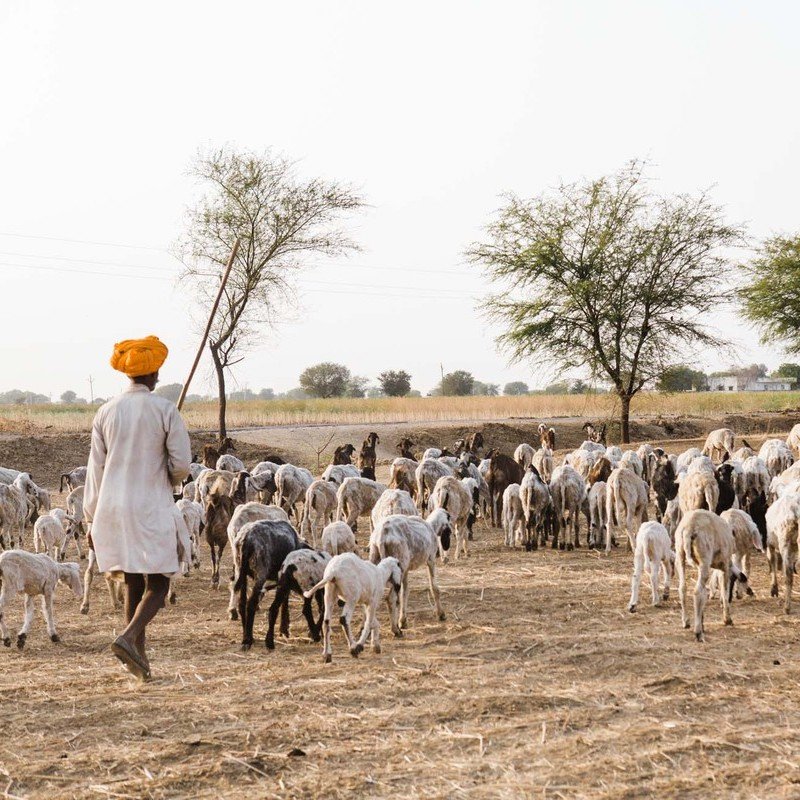
Multicultural, immensely beautiful, spiritual and fascinating, crazy, loud, chaotic — all these words pretty much sum up India. India is not just a destination but also a truly amazing experience. However, if you are traveling to India for the first time, it can be a bit overwhelming, somewhat daunting, and potentially a huge culture shock. India is loud; India is colorful. India is extremely busy with many different people, cultures, and activities happening all at the same time.
Videos by TravelAwaits
As an Indian born and raised in India for more than half my life, India is as much my home now as is the United States. But India is nothing like the United States. In fact, India is an assault on all five senses at the same time — in a good way. However, armed with a few basic tips and strategies, it can be an unforgettable (for all the right reasons) experience. Just keep these things in mind.
1. Understanding Indian Culture Is Paramount
India is a predominantly Hindu nation. But India has many different religions that live in close proximity to one another. It is not uncommon for a mosque, a temple, and a church to be within a one-mile radius. Indians are relatively religious and take worship very seriously, so be respectful when visiting these places.
India boasts some of the oldest temples, mosques, and churches in the world, many of which are UNESCO sites. By the same token, be aware that India has a relatively modest culture. Covering your arms and legs is a simple step toward respecting this. Indians will gladly tell you to cover up, remove your shoes, and bow your head when appropriate, so you will learn very quickly. This is particularly important when entering a sacred space, like a temple. Also, if you see shoes outside a shop, it’s a sign to remove your own. In big cities, you can wear whatever you want, but when visiting small towns, dress modestly. It is always good to aim to blend in with the rest of the population.
With well over a billion people calling the subcontinent home, India is the second-most populous country in the world. Many Indians grow up without the luxuries of privacy or personal space. So, don’t be offended or surprised when people lean on you in the subway or stand “too close” when they speak to you.
The overcrowding problem is especially prevalent on the streets. The big cities are notorious for traffic jams that can last for hours. In line with this, the Indian sense of time is somewhat unique. It is not uncommon to arrive later than fashionably late for events. In fact, it is almost expected. The concept of Indian Standard Time is a joke but one that you will find very appropriate in most places. Just go with the flow and don’t stress too much about being on time. In the end, odds are everything will work out exactly as expected.

2. Experiencing Indian Food Will Be A Highlight
Food is one of the most fascinating things about Indian culture. In a country this large, every region has its own specialty cuisine and they are all equally amazing. India is largely vegetarian, with lentils, rice, and vegetables being the staple diet for most folks and the easiest to get when traveling. Meat dishes are available, but beef is harder to get since the cow is sacred in India and revered as God by many.
Street food is one of the best kinds of food but a little hard on the stomach for most Western travelers. If your constitution permits, try a little bit of all different cuisines. It is perfectly normal to ask restaurants to reduce the spice level in a dish. Be smart about what you eat — when in doubt, avoid it.
The general rule of eating food is that as long as it’s cooked, it should be fine. Be more careful with the water you drink. Avoid drinking tap water and stick to bottled or filtered water. If it makes you comfortable, carry water purifier tablets, especially if you are traveling to remote areas. When in doubt, you can always choose fresh coconut water — it’s refreshing and so good for you. Western staples like Coke, Pepsi, and junk food like chips are readily available. The bigger cities have chains like Subway and McDonalds, so you will definitely not starve in India.
You can also read up on eating in India: how to avoid Delhi belly and enjoy traditional foods.

3. You Can Feel Safe And Secure While Traveling In India
Western travelers often receive a lot of attention in India — usually friendly but sometimes in the form of staring. Keep in mind that you will probably be asked to pose for photos with locals. Indians love taking selfies with tourists. In most cases, it is harmless fun and a form of entertainment. Female travelers will inevitably be the target of lots of staring. Unfortunately, oftentimes returning a man’s gaze could be misconstrued as flirting. So a better option is to just ignore them completely or wear sunglasses. It is perfectly acceptable to be rude if someone is being overly friendly and you are not comfortable with all the attention. Practice common sense when it comes to traveling to unknown places, avoid traveling alone at night, and always let someone know where you are.
India is a predominantly English-speaking country. Everyone in the bigger cities knows and speaks English. So use that to your advantage. If you are traveling to rural areas, it is a good idea to know some basic words in the local language (and these differ from place to place) to help you get by.
If you are traveling to India for the first time, ask around to see if someone knows someone who knows someone in India. At over 1 billion strong, we Indians are everywhere. Sometimes just having the peace of mind that you know a local can make all the difference.

4. There Are Many Places Worth Seeing, And Many Options For Getting Around
With so many options for flights, trains, local buses, taxis, and auto-rickshaws, getting around India is very smooth. India has one of the largest railway networks in the world. To experience the real beauty of India and save some money, a train is an optimal choice. When traveling by train, carry chains and locks to secure your luggage, and make your bookings well in advance. Air-conditioned buses also travel between most big and small cities every day. For short trips within cities, use pre-paid taxi services or the Uber or OLA apps. Another way of navigating within cities is to use auto- and cycle-rickshaws. Keep in mind that traffic on Indian roads can be terrible, and allow yourself extra travel time.
Additionally, India runs on 220-volt electricity along with a three-prong plug, so pack necessary adaptors and converters to keep your devices charged along the way.

5. The Weather In India Is All Its Own
In theory, India experiences diverse weather conditions. This huge country has four primary seasons: summer, winter, monsoon, and post-monsoon. However, for all practical purposes, there are three distinct seasons: hot, which translates to dry and arid; monsoon, which translates to wet and gloomy; and, lastly, just really hot and humid. Of course, the weather you experience will be impacted by when you travel. November through February are cool and mildly hot, and April through October are hot, humid, wet, or sweltering depending on where you go.
Packing for a trip to India will largely be determined by where you are going and when, plus the activities you are planning to do. If you are traveling to India in the summer, lightweight clothes are perfect, but winter conditions vary a lot throughout the country. For example, winter in Delhi is very different from winter in Bangalore. It’s worth packing a light coat and jacket for evening and an umbrella and raincoat for monsoon travel. When in doubt, pack light. You can always buy cotton clothes, sandals, and other accessories in India as needed.
A trip to India can be nerve-racking to say the least, even for people like me who have lived and worked there. But armed with a few basic tips and a que sera, sera attitude, visiting India can be an amazing experience.
Feeling inspired to pick an Indian destination or two? Consider
